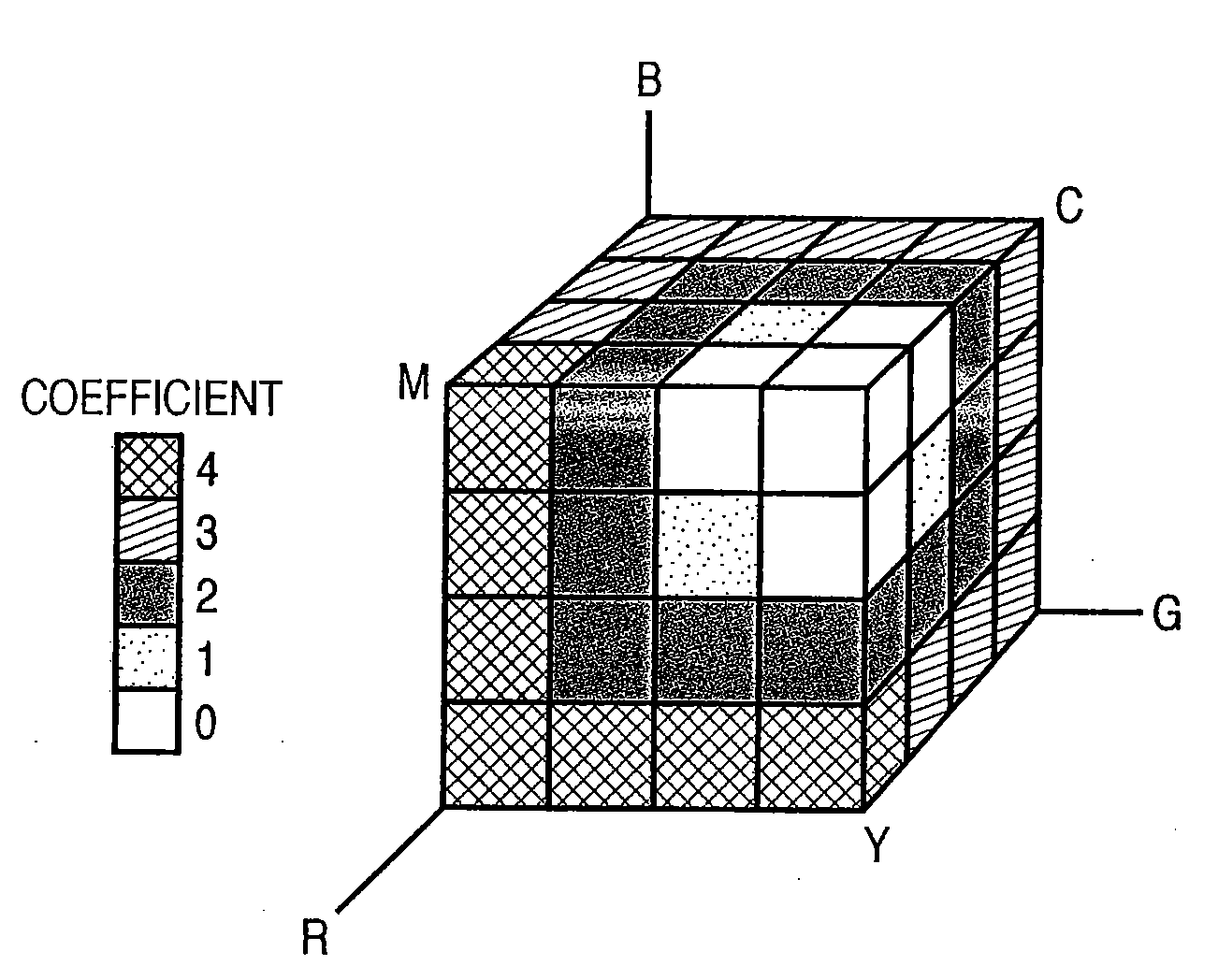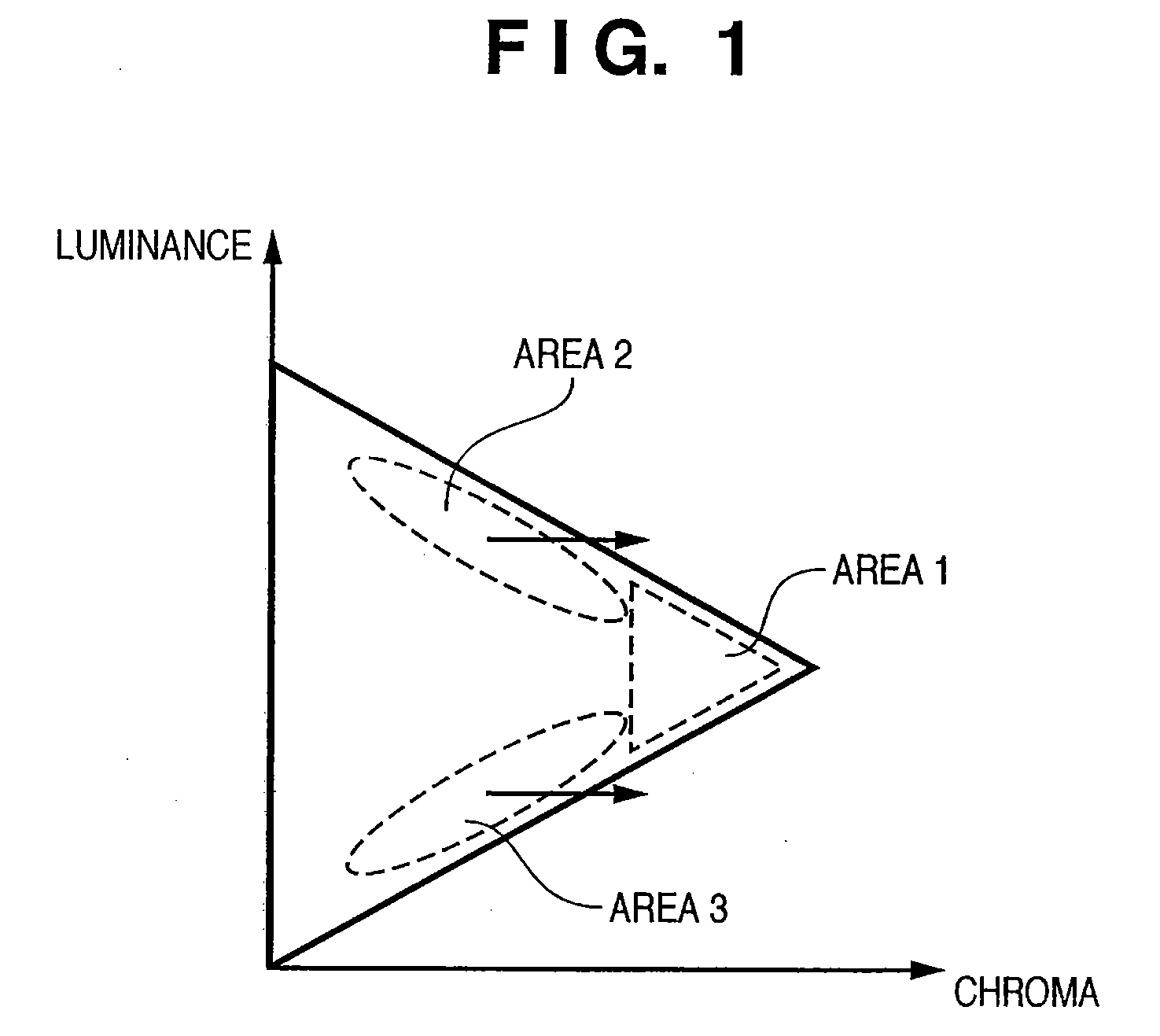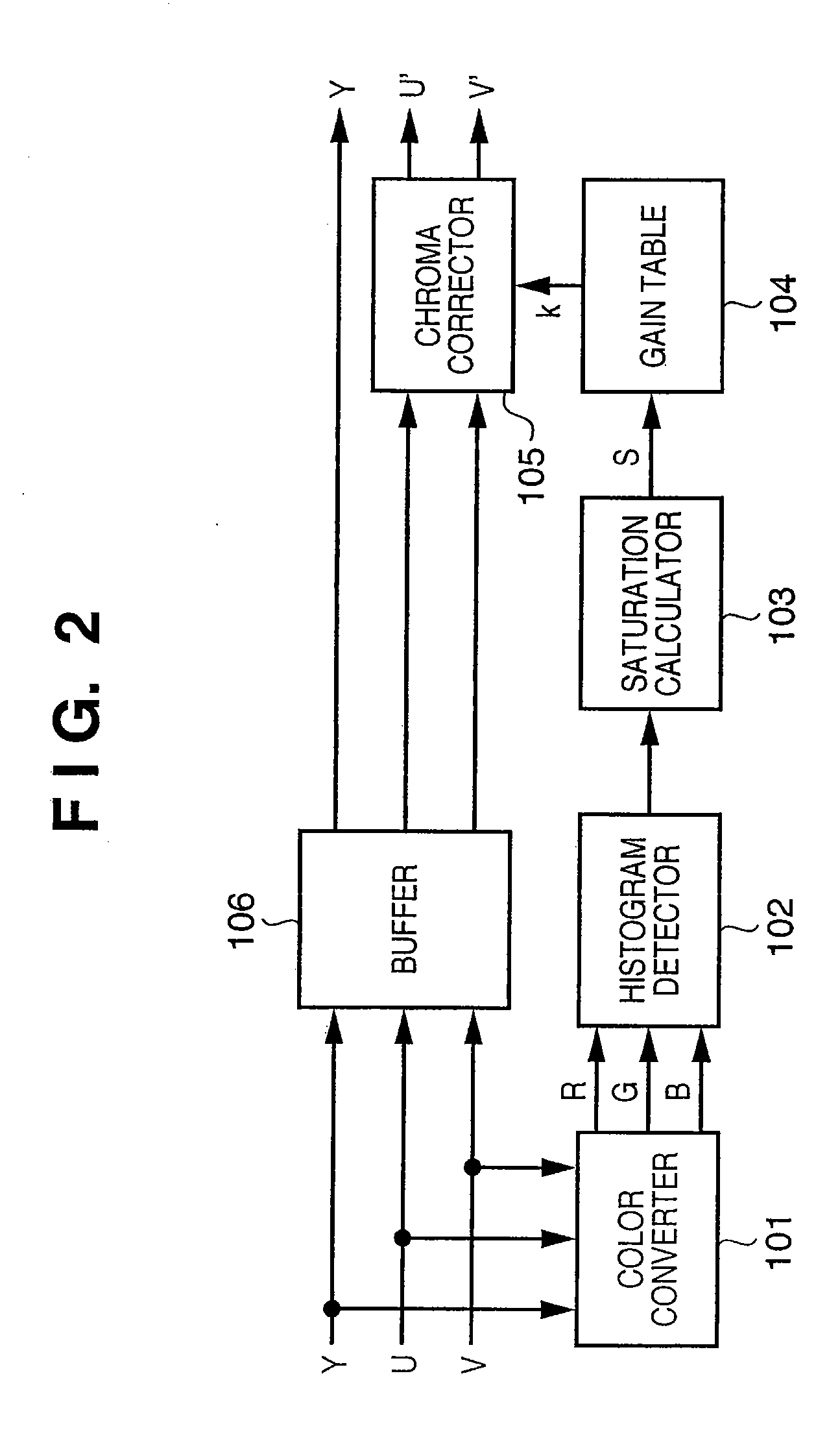Image processing apparatus and method thereof
a technology of image processing and apparatus, applied in the field of image processing, can solve the problems of color saturation, color saturation, and chroma gain reduction, and achieve the effect of reducing the loss of details due to the chroma shift of an image toward the high-chroma side, and reducing the color saturation in chroma correction
- Summary
- Abstract
- Description
- Claims
- Application Information
AI Technical Summary
Benefits of technology
Problems solved by technology
Method used
Image
Examples
first embodiment
[Arrangement of Apparatus]
[0040]FIG. 2 is a block diagram showing the arrangement of an image processing apparatus according to this embodiment. In the first embodiment, assume that YUV signals are adopted as input signals.
[0041]A color converter 101 converts input YUV signals into RGB signals. As this conversion, for example, 3×3 matrix operations can be made. A histogram detector 102 receives the RGB signals and generates a 2D histogram. A saturation calculator 103 receives the 2D histogram, and calculates an ease of saturation S based on the 2D histogram. A gain table 104 receives the ease of saturation S and outputs a chroma gain k corresponding to the ease of saturation S. A chroma corrector 105 applies chroma correction to color-difference signals U and V output from a buffer 106 using the chroma gain k, and outputs signals U′ and V′.
[0043]FIG. 3 is a block diagram showing the arrangement of the histogram detector 102.
[0044]A maximum-minimum detector ...
second embodiment
[0066]An image processing apparatus according to the second embodiment of the present invention will be described hereinafter. Note that the same reference numerals in the second embodiment denote the same components as in the first embodiment, and a detailed description thereof will not be given.
[0067]The image processing apparatus according to the second embodiment receives RGB signals, and applies chroma correction to the RGB signals. FIG. 8 is a block diagram showing the arrangement of the image processing apparatus of the second embodiment. The differences between the image processing apparatus of the second embodiment and that of the first embodiment are the conversion characteristics of the gain table 104, and the arrangement of a chroma corrector 107.
[0068]FIG. 9 is a block diagram showing the arrangement of the chroma corrector 107.
[0069]FIG. 10 shows a table which is stored in a ROM 43 and corresponds to an RGB color space divided into 5×5×5. That is, the ROM 43 stores out...
third embodiment
[0081]Image processing according to the third embodiment of the present invention will be described hereinafter. Note that the same reference numerals in the third embodiment denote the same components as those in the first and second embodiments, and a detailed description thereof will not be repeated.
[0082]The third embodiment will explain an example in which chroma correction is applied in consideration of the gamut of an image output device such as a display device or the like. FIG. 13 is a block diagram showing the arrangement of an image processing apparatus according to the third embodiment. Differences from the arrangement of the second embodiment are a histogram detector 109 and gamut corrector 108.
[0083]FIG. 14 is a block diagram showing the arrangement of the histogram detector 109.
[0084]A signal value detector 13 outputs a color component signal indicating a maximum value Max and that indicating a minimum value Min for each pixel from the input RGB signals. Also, the det...
PUM
 Login to View More
Login to View More Abstract
Description
Claims
Application Information
 Login to View More
Login to View More - R&D
- Intellectual Property
- Life Sciences
- Materials
- Tech Scout
- Unparalleled Data Quality
- Higher Quality Content
- 60% Fewer Hallucinations
Browse by: Latest US Patents, China's latest patents, Technical Efficacy Thesaurus, Application Domain, Technology Topic, Popular Technical Reports.
© 2025 PatSnap. All rights reserved.Legal|Privacy policy|Modern Slavery Act Transparency Statement|Sitemap|About US| Contact US: help@patsnap.com



